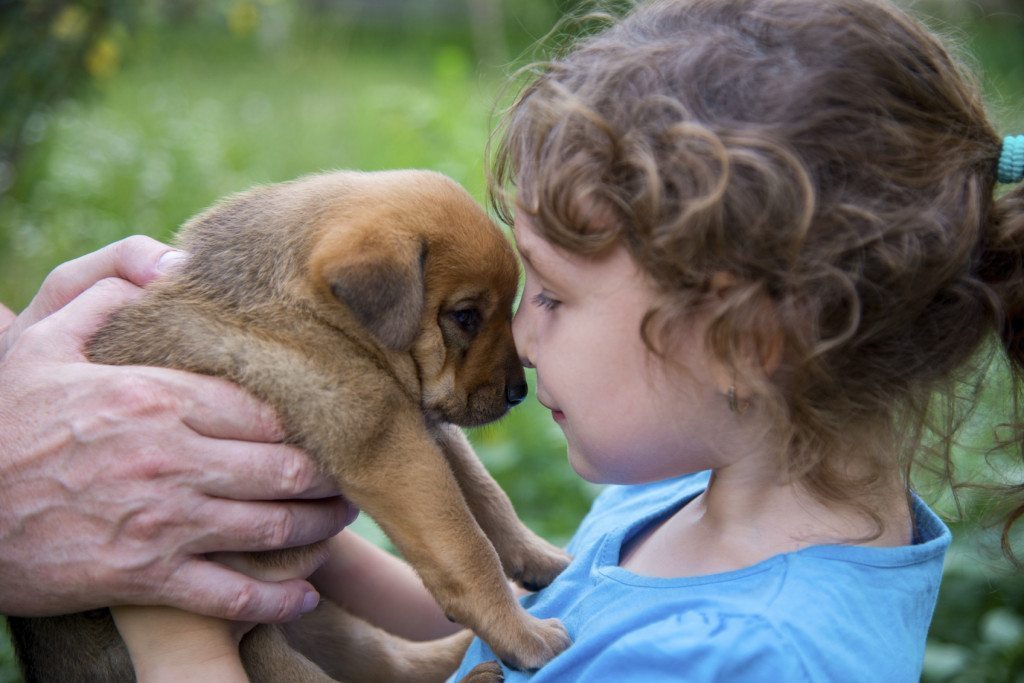 If you’re a parent of a young child, you’ve undoubtedly been asked at one point or another about bringing a pet into your home. After all, what’s not to love about a warm, cuddly, and affectionate animal? Of course, your child has no ability to understand the equal portion of time, diligence, and patience it takes to make the human-animal relationship work, especially once the thrill of taking Fido for a walk has calmed into an unwelcome sense of chore.
If you’re a parent of a young child, you’ve undoubtedly been asked at one point or another about bringing a pet into your home. After all, what’s not to love about a warm, cuddly, and affectionate animal? Of course, your child has no ability to understand the equal portion of time, diligence, and patience it takes to make the human-animal relationship work, especially once the thrill of taking Fido for a walk has calmed into an unwelcome sense of chore.
If you’ve already had your pet in the house for a some time, maybe you’re looking for a way to combine the necessary responsibilities of animal care with an opportunity to help your son or daughter better understand pet ownership.
For starters, remember that not every child will be willing or able to help with pet care. Demanding your child’s participation is an unlikely way to convey the lesson you seek to teach—that pets, like most of life’s joys, require effort in order to maximize the experience. That doesn’t mean you shouldn’t ask your child to follow through with assigned pet responsibilities; just make sure your child is up to the task before handing out an assignment.
Start by Modeling the Behavior You Want Them to Learn
This shouldn’t come as a surprise. As some of us have painfully experienced, one foul word muttered under your breath can have your three-year-old unwittingly expanding the vocabulary of the entire playground. The best way for your child to learn about the basics in pet care is to first show them the day-to-day tasks. As you scoop out food for your critter, let your child stay close by and explain what you are doing. Bring your son along the dog’s daily walk, or, as you pick up your dog’s waste, explain how it’s part of a pet owner’s job to help keep parks clean from animal waste, which can carry diseases.
To help connect the emotional dots, be sure to point out how happy human care makes your creature. Show your daughter how excited your pet becomes at suppertime and how enthusiastically it eats its meal. Let her know that the wagging tail or cat’s purr upon arrival is a show of gratitude for the devoted human leadership you provide.
Help Them Understand the Full Needs of Your Animal
Whether for an annual check-up or an occasional illness, your child’s participation in your pet’s medical care can help them to understand all the needs of a pet. This could be as simple as having your child check the calendar to spot the monthly heartworm sticker, or teaching your child to keep an eye out for any spots or swelling on your animal that might indicate an injury. Attentiveness to your pet’s general wellness is a great way for a child to understand the human role as caretaker.
A final and more challenging concept can be an explanation of boundaries between you and your pet. Every pet needs some down time—especially in a house full of young children. Once you observe where your pet goes to veg out, teach your child that the area is off limits. Your pet needs a place to escape the loving but sometimes careless prodding and grabbing of little hands. Establishing these boundaries is important for the safety of both your pet and child. For some, this may extend to additional areas such as giving the pet human food or limiting certain types of interaction.
It’s never too late to start sharing the responsibilities of pet ownership with your child, even with the smallest of tasks. And the results are something you, your child, and your pet can enjoy together.
Photo Credit: istockphoto.com









